What Does It Mean When a Dog’s Ears Are Back?
Sometimes your dog’s body language is easy to read.
A big stretch followed by a slow wagging tail next to your bed when you wake up means “good morning!” Trembling behind your legs with a tucked tail means “I’m scared!” Perked up ears and a head cocked to one side mean, “what’s that?!”
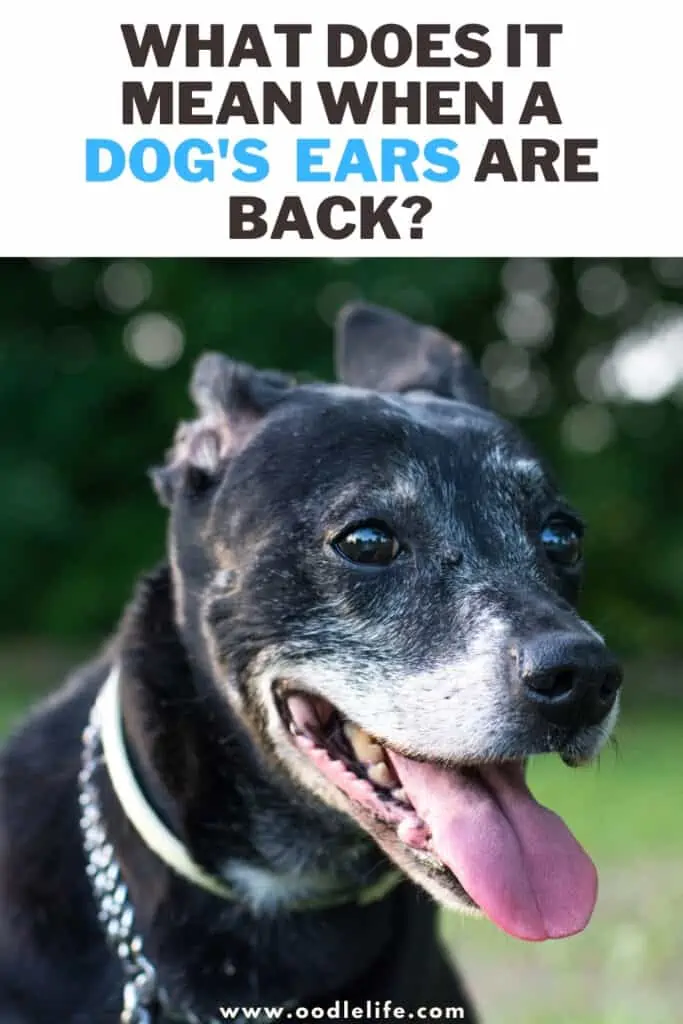
Other cues, however, can be harder to read and misreading body language frequently leads to miscommunication.
Unfortunately, miscommunication between humans and dogs often leads to trouble. Dogs that bite rarely do so “out of the blue.” Dogs that pee on the carpet usually try their best to let us know they need to go out first.
Your dog’s ears are two very expressive and useful communication devices that can clue you in to a whole world of emotion. This article will talk about dogs’ ears, learn how they use them to communicate, and learn how to read them.
If you’ve been having trouble communicating with your pup or are simply wondering, “what does it mean when a dog’s ears are back?” then read on to learn more.
How to Read Doggie Language?
Dog body language, or “Doggie Language,” is about more than reading one body part. A dog doesn’t wag its tail in a vacuum. Usually, several physical cues happen simultaneously.
Combining these clues and situational context tells you how the dog is feeling.
For example, many people incorrectly assume that a wagging tail means a dog is happy, which is a gross oversimplification. Yes, dogs wag their tails when they are happy, but many also wag them in other situations—barking at an intruder or discovering a cat under the staircase.
It’s crucial to look at the dog’s major body parts—tail, eyes, mouth, ears, hackles—and the dog’s overall state and the situation. So let’s quickly look at how to read your dog’s general body language before we hone in on the ears.
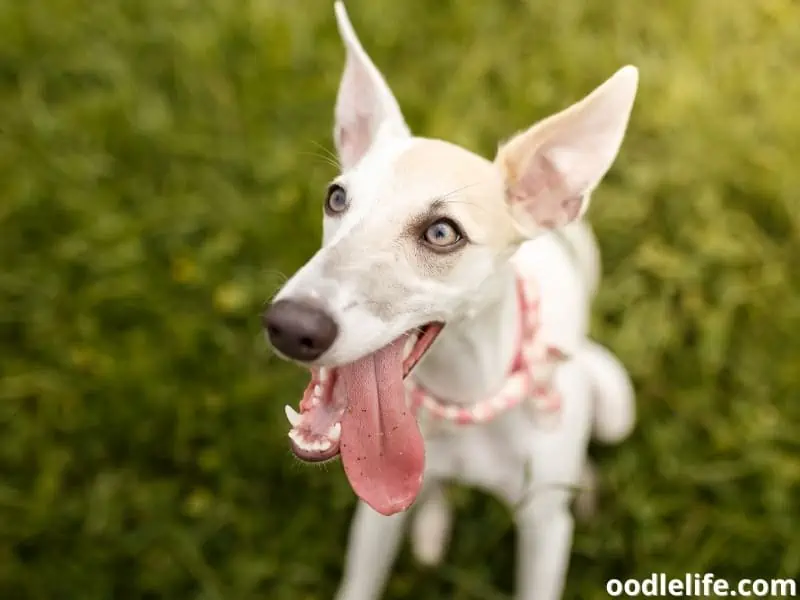
Overall State
When evaluating a dog’s overall state, the most important things to examine are whether they are relaxed or tense and where they position themselves concerning other people or animals.
Tense
A tense dog might look one of two ways. They might stand tall, with ears pricked up, shoulders and chest puffed, tail raised high, and maybe even hackles raised. Their eyebrows might be raised or furrowed.
Their mouth will be closed and hard, and if they are very emotionally aroused, they might puff their cheeks or growl.
Or, they might lower their head, flatten their tail and ears, and stand with their front legs wide apart. Either way, their muscles will be rigid and will stand very still. This tension is a good indicator that your dog has seen a potential threat, or at the very least, something intriguing.
Relaxed
Most people know how a relaxed dog looks. For example, a relaxed dog will probably have squinty eyes, an open mouth, and relaxed muscles. Gentle panting also indicates that your dog is relaxed (and maybe a bit hot!)
If your dog is lying down with their eyes closed and seems unconcerned about what’s happening around them, that’s also a pretty obvious indication that they’re relaxed.
Position
Uncomfortable dogs typically try to position themselves away from what makes them uncomfortable. This positioning might be as subtle as leaning away from someone who is sitting too close.
Dogs who are nervous about something will usually try to keep their eye on it. If your dog has its eye fixed on something, it’s an indicator that they’re preparing to engage with that thing. Engagement could mean investigating, chasing, fighting, barking, biting, or attempting to play.
If your dog sits with its back to something, that’s an indication that they’re not worried about it. Many dogs will sit facing away from their favorite people and lean against them—this is one of the ultimate indications of trust.
Situation
Situational clues are what most people forget or don’t think about when evaluating a dog’s body language. Unfortunately, it can be tricky to understand situational context because much context comes from knowing the dog’s history.
If you haven’t paid attention to your dog’s emotional state in the past, you will have trouble picking up on which situations make them tense, afraid, protective, or excited.
We’ve all seen the chihuahua straining at the end of the leash, mad-dogging every passing pooch while the clueless owner’s nose is buried in their phone.
To understand how certain situations trigger your dog, you have to constantly pay attention to your dog when you’re out with them. Then you can begin to build up a dictionary of your dog’s body language and responses to specific triggers and situations.
What Do a Dog’s Ears Tell Us?
Once you understand basically how your dog looks when they are relaxed vs. tense and how they respond to specific situations, you can start to read their physical cues.
Ears are a fascinating part of the dog’s body. They tell us so much about the dog’s emotional state. In general, a dog’s body will follow where its ears point. What does that mean?
If your dog is standing with ears perked up and forward, something has likely caught the dog’s attention, and the dog will start to move toward whatever that is. On the other hand, if the ears are pulled back, it could be that the dog feels like retreating.
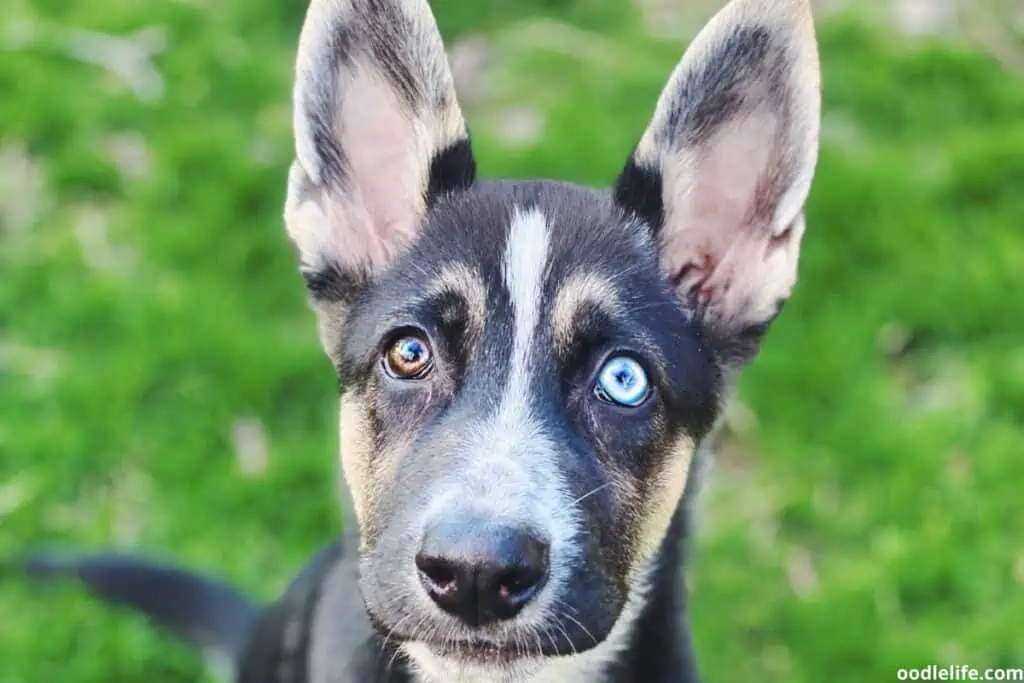
What Does It Mean When a Dog’s Ears Are Back?
There are several reasons that a dog’s ears might be back. To interpret those reasons, you have to look at the dog’s overall body language and the situation. Is the dog tense or relaxed? Are they being triggered by something in the environment?
Let’s look at the reasons a dog’s ears might be back and how to use context clues and other body language to figure them out.
Fear
Fear is the number one reason that dogs pull their ears back. A dog that flattens its ears against its head is usually trying to retreat, hide, or make itself appear smaller. A fearful dog may also tremble, tuck or drop its tail, curve its body and lower its head.
The emotion of fear is the root of many other emotions. Fearful dogs who feel cornered often lash out with aggression to protect themselves. Fear can also lead to submissive behaviors like urination, “smiling,” and tail-wagging.
The easiest way to tell if your dog is afraid is to look at their overall body language and the situational context. For example, if your dog is tense, shrinking, trembling, and tucking its tail with its ears pinned back, something in the environment is probably making them afraid.
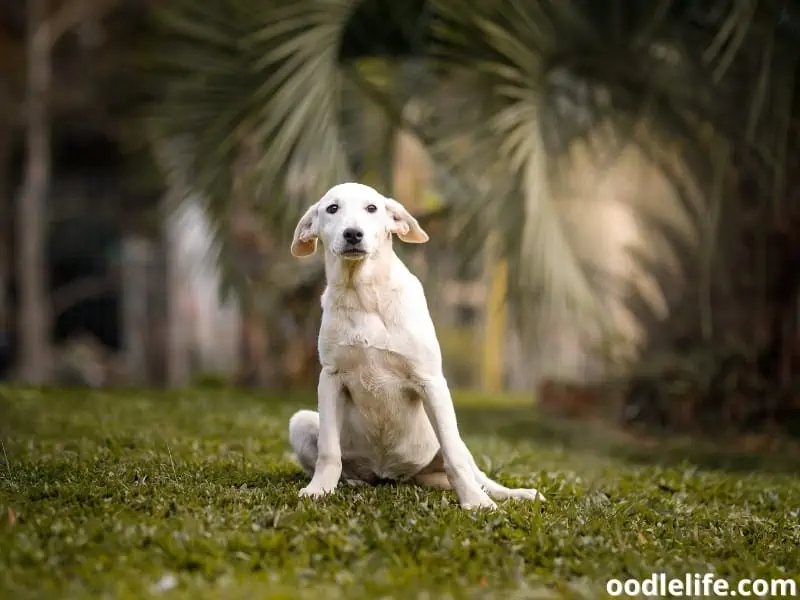
Anxiety
Anxiety is a less acute form of fear. A dog who feels anxious is fearful but not yet so afraid that it feels the need to retreat or lash out. As well as pulling its ears back, an anxious dog might yawn, lick its lips, pant, pace, or try to distance itself from the thing that is troubling it.
Your dog might be made anxious by many things. For example, many dogs dislike being in the car, being in loud, crowded places, or being left alone. Some dogs dislike being petted and put up with it while displaying signs of anxiety that clueless humans tend to ignore.
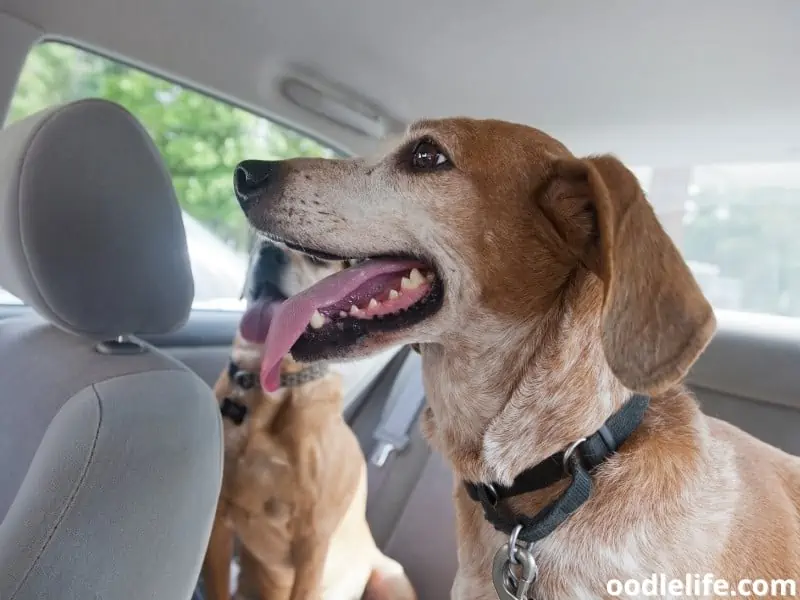
Appeasement
This is another, more subtle form of fear. Submissive behavior or appeasement is a dog’s way of letting you or another dog know that they mean no harm. By showing that they are not a threat, the dog is hoping that they won’t be attacked.
Dogs display appeasement in a few ways, including putting their ears back, lowering their head to appear smaller, lying down, wagging their tail, or sometimes even rolling over or urinating.
When dogs greet each other, it’s common for the less confident dog to approach in a semicircle, curving their body away and lowering their ears.
If your dog frequently displays submissive behavior when greeting other dogs or people out in the world, it could signify that they don’t want to greet them. Never force your dog to greet another dog if they aren’t comfortable, leading to aggression if the fearful dog lashes out.
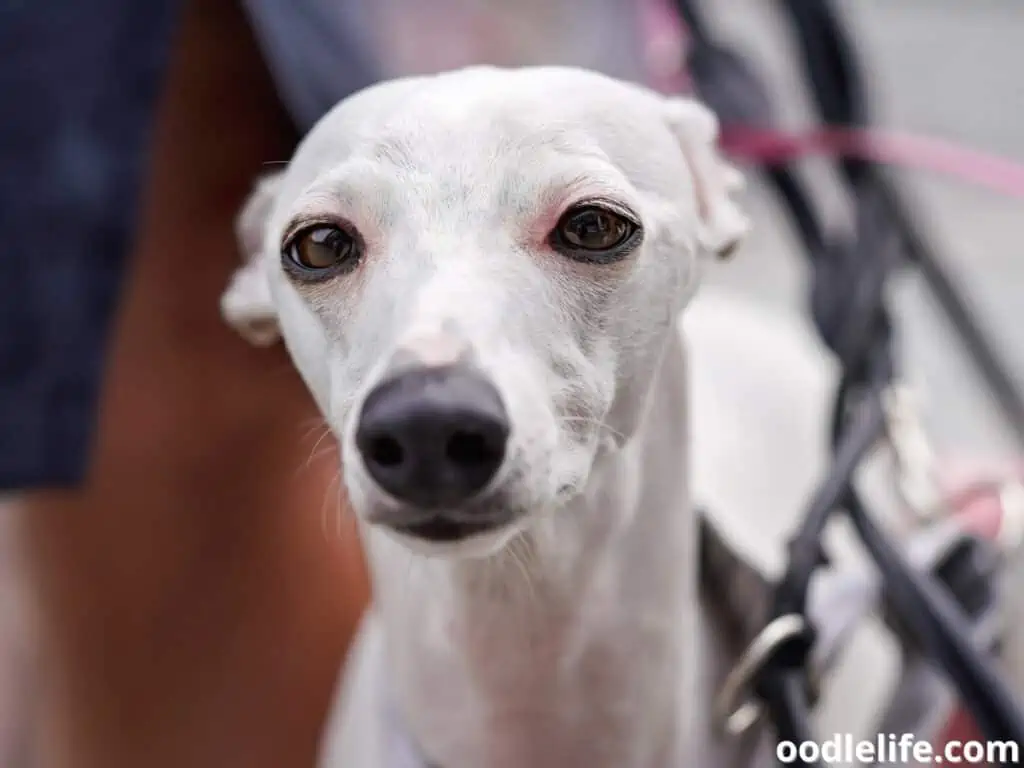
Courting
This behavior could be considered similar to appeasement. For example, when a male dog is interested in a female dog, he will sometimes pull his ears back when approaching her, indicating to the female that he is not a threat and allowing him to get closer to her.
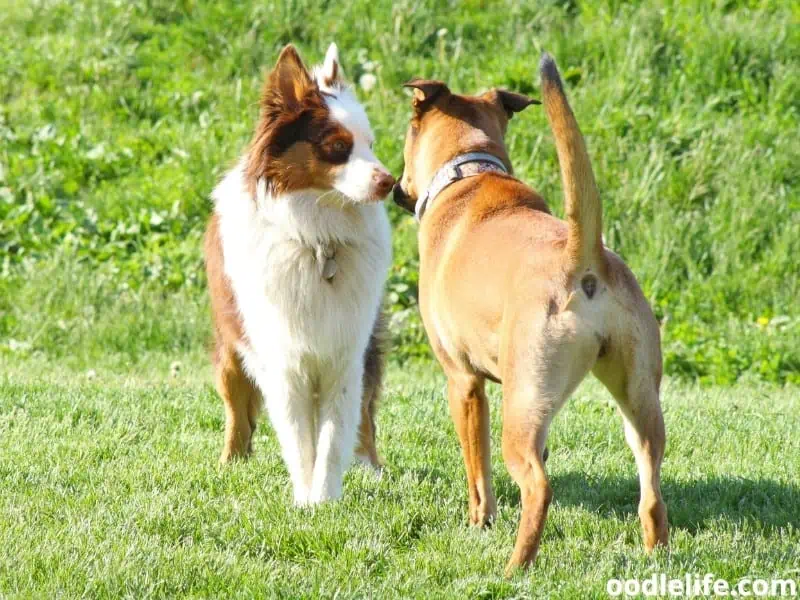
Final Word
Take the time to observe your dog and build up a mental dictionary of their physical cues and situational triggers. It will be so worth it to fully understand how your dog communicates.
Correctly reading doggie language can also save you from many scraps and unfortunate situations when interacting with other dogs and people out in the world.
Learning how to read your dog strengthens your bond and enriches your life together.